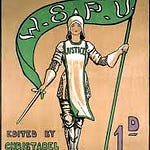When Alice Paul penned the Equal Rights Amendment (ERA) back in 1923, she probably didn’t imagine we’d still be debating it 100 years later. And yet, here we are. The ERA—a simple 24-word promise of gender equality—has sparked decades of fierce activism, cultural backlash, and political gridlock.
In the latest episode of Bitchy History, we dive into the epic saga of the ERA: its beginnings in the suffragist movement, its near-victory in the 1970s, and the relentless campaign by Phyllis Schlafly to stop it in its tracks. You’ll hear how Schlafly weaponized fear and “family values” to derail the ERA and why her influence still looms large in today’s debates over gender equality.
But the story doesn’t end there. We explore how the ERA found new life in the 2010s, with Nevada, Illinois, and Virginia ratifying it decades after the original deadline. And we’ll unpack the legal and cultural challenges that continue to keep the ERA in limbo, even as public support for gender equality grows.
Why does the ERA still matter?
Because without it, gender discrimination remains a legal gray area in the Constitution. Pay gaps, LGBTQ+ protections, reproductive rights, and even gender-based violence—all of these issues are at stake.
This isn’t just a history lesson; it’s a call to action. The ERA is more than a forgotten amendment—it’s unfinished business.













